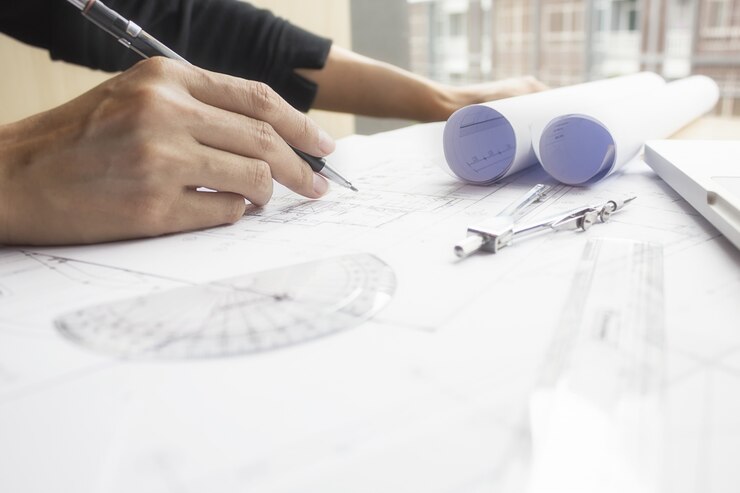Interior space optimization has become a critical focus in modern architecture, particularly as urbanization drives people into smaller living spaces. Architects are increasingly called upon to find innovative ways to maximize functionality, comfort, and aesthetics in limited spaces. This blog post explores how architects are redefining interior space optimization through various services and design strategies. We’ll compare and contrast these approaches to help you understand which might be best suited to your specific needs.
1. Smart Space Planning
One of the most traditional yet effective methods architects use to optimize interior spaces is smart space planning. This involves carefully analyzing the available space to create an efficient layout that meets the occupants’ needs without unnecessary clutter or waste of space. Smart space planning focuses on circulation, functional zones, and flexibility.
Pros:
- Versatility: Can be applied to both small and large spaces.
- Personalization: Tailored to the client’s lifestyle and requirements.
- Affordability: Generally more budget-friendly as it doesn’t require extensive renovation or technology integration.
Cons:
- Limited by existing structures: Smart space planning can be restricted by pre-existing architectural constraints, such as fixed walls or columns.
- Not tech-centric: It lacks the innovative edge of modern technology-based solutions.
2. Multifunctional Furniture Design
Multifunctional furniture has gained significant popularity as architects seek to make the most out of small spaces. These are custom-designed pieces that serve multiple purposes—for example, a sofa that can convert into a bed or a coffee table that doubles as storage.
Pros:
- Maximizes utility: Optimizes space by providing multiple functions in a single piece of furniture.
- Cost-effective: Reduces the need to buy multiple pieces of furniture, which also saves space and money.
- Customizable: Architects often design multifunctional furniture to fit a specific room, making it tailored to the homeowner’s needs.
Cons:
- May limit design freedom: The focus on functionality may result in a compromise in aesthetic appeal.
- Customization costs: Fully customized furniture can be expensive, especially when using high-quality materials or complex mechanisms.
3. Modular Design
Modular design is a concept where different parts of a space, or even furniture, can be reconfigured to meet changing needs. Modular units—such as walls, shelves, or furniture—can be rearranged, added, or removed based on usage patterns.
Pros:
- Adaptability: Spaces can evolve over time without requiring major renovations.
- Flexibility: Allows spaces to serve multiple purposes, making it ideal for homes that need to accommodate work, play, and relaxation.
- Sustainability: Modular designs often emphasize reusable or recyclable materials, making them eco-friendly.
Cons:
- High initial cost: Modular solutions can be expensive upfront, especially if custom-built for a specific space.
- Aesthetic compromise: The focus on functionality can sometimes overshadow the design elements, making the space feel utilitarian.
4. Open-Plan Living
Open-plan living has been a popular trend for years, especially in urban environments. It involves removing unnecessary walls and partitions to create a single large space that can serve multiple purposes—like combining the living room, kitchen, and dining area into one continuous space.
Pros:
- Creates a sense of spaciousness: Open-plan designs make even small spaces feel larger and more airy.
- Encourages social interaction: The open layout is ideal for entertaining and family gatherings, as people can communicate freely across different zones.
- Flexibility: Without fixed walls, you can easily rearrange furniture or add temporary partitions.
Cons:
- Limited privacy: Open-plan living lacks distinct zones, which can make it difficult to find private areas.
- Noise and clutter: With fewer barriers, sound and clutter can easily travel across the space, making it harder to manage.
5. Vertical Space Utilization
Vertical space utilization involves making use of walls and higher areas in a room to optimize floor space. This could include installing high shelves, hanging plants, or even designing vertical gardens.
Pros:
- Maximizes limited floor space: Perfect for smaller homes or apartments where floor space is at a premium.
- Design flexibility: Architects can get creative by using wall space for storage, decor, or functional purposes.
- Enhances aesthetics: Vertical gardens, art installations, or tall bookshelves add to the visual appeal of a room.
Cons:
- Requires high ceilings: In rooms with low ceilings, vertical optimization may not be as effective.
- Accessibility: Higher storage or decor may require ladders or special tools to access, which can be inconvenient for daily use.
6. Integrated Smart Technology
With the rise of smart homes, architects are integrating technology to optimize space efficiency. This could include automated lighting, smart furniture that adapts to your needs, or even temperature and sound control systems embedded into walls and floors.
Pros:
- Convenience: Smart systems can be controlled via smartphones or voice commands, making them user-friendly.
- Energy efficiency: Automated systems can improve energy use, lowering long-term costs.
- Enhances value: Homes with integrated smart technology often have higher resale value.
Cons:
- Costly: High upfront investment for smart systems and devices.
- Complexity: Requires ongoing maintenance and updates, and users may face a learning curve with the technology.
7. Minimalist Design
Minimalist design emphasizes simplicity, clean lines, and open spaces. By removing unnecessary furniture and decorative elements, architects focus on maximizing the utility of every square inch of space.
Pros:
- Timeless appeal: Minimalist spaces often have a sleek, modern look that doesn’t go out of style.
- Easy maintenance: With fewer objects and clutter, minimalist spaces are easier to clean and maintain.
- Promotes mental clarity: Many find that a minimalist home helps reduce stress by eliminating visual clutter.
Cons:
- Cold or sterile feel: Some people find minimalist spaces to feel impersonal or lacking in warmth.
- Limited storage: Minimalism often means less furniture, and with it, fewer storage options.
8. Biophilic Design
Biophilic design integrates natural elements into interior spaces to create a more calming and harmonious environment. This could involve using natural materials, incorporating indoor plants, or maximizing natural light through large windows.
Pros:
- Health benefits: Biophilic spaces promote mental well-being by connecting occupants to nature.
- Aesthetic appeal: Natural elements can add beauty and tranquility to any space.
- Energy efficiency: Maximizing natural light can reduce the need for artificial lighting.
Cons:
- Maintenance: Plants and other natural elements require ongoing care and attention.
- Higher costs: Biophilic designs often use premium materials like stone or wood, which can increase the cost.
Read This Article – The Future of Kosher Certification in India: Trends and Predictions for 2024
Conclusion
Each architectural service aimed at interior space optimization offers unique benefits depending on your specific needs and budget. Smart space planning is a versatile and affordable option, while modular design and multifunctional furniture offer flexibility for growing families or dynamic spaces. Open-plan living creates a sense of spaciousness, while vertical space utilization is ideal for smaller homes. Integrating smart technology and embracing minimalist or biophilic designs offer both aesthetic and practical advantages.
Ultimately, the best service for you will depend on your space, lifestyle, and priorities. Whether you’re looking for cost-effective solutions or high-tech innovation, today’s architects are well-equipped to redefine your interior space to meet the demands of modern living.
For those seeking natural solutions in architecture, you may also want to consider consulting a architect in Haldwani who can blend traditional craftsmanship with modern design techniques to create harmonious and sustainable living spaces.
Read This Article – Start a High-Performing Rental Business Using a Vacation Rental Script



